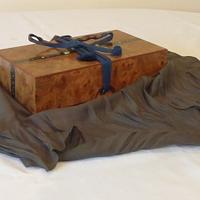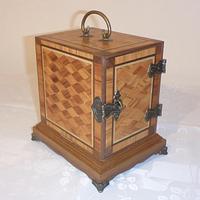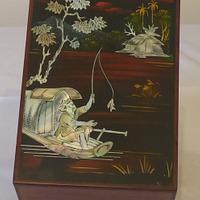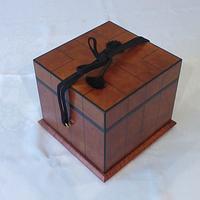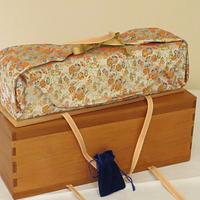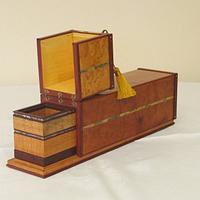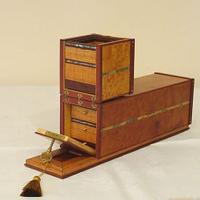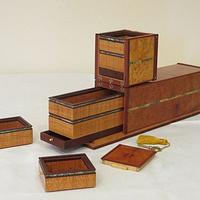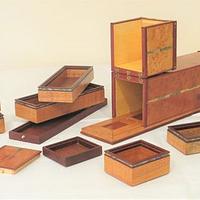Share your craft projects
Make new craft buddies
Ask craft questions
Blog your craft journey
Madburg
426 posts
and
20 followers
in about 3 years
in about 3 years
More from Madburg
'Earth Treasure'
This box, or is at a chest of drawers, is another Japanese style box inspired by the work of Suda Kenji. Though I think the flip-up end may be unique! Again it's a piece of Kogei, a uniquely Japanese term that brings together a whole range of western concepts that embrace traditional woodwork, creativity, art, craft, and artistic expression. The word is used to categories items which though they have a function, are intrinsically 'beautiful things', which extends well beyond their utility value.
Earth Treasures is presented in a typical Japanese Tsutsumi - gift wrapped fashion. It is stored in a cedar wood outer box, called a Tomobako.
Earth Treasures is presented in a typical Japanese Tsutsumi - gift wrapped fashion. It is stored in a cedar wood outer box, called a Tomobako.
It has an engraved wooden panel on the top, written in Japanese Kanji characters, has the title of the contents, my name, together with where and when it was made.
The Tamobako is tied with traditional Japanese Sanada Himo cotton tapes, which are also used for the lift out tray that holds the box.
As well as its outer Tamobako, it is also gift wrapped in a traditional Furoshiki fabric square, of silk brocade, to add more 'suspense' and mystery to what lies inside.

Earth Treasure is made from marine plywood veneered with book-matched birch and cherry. It is further enhanced with a decorative band of pau shell, Jarrah edging, and opal dots.

Its base is made from cherry and jarrah. The lockable flip-up end reveals three small trays, which can be fitted into the flipped-up end.


With these trays removed, a lockable kendo-buto - drop fit door is revealed. Behind this are five more trays/drawers which slide out.


All the trays are made of banksia, with fiddle-back jarrah toppings and pau shell inlays.


In typical fine Japanese woodworking fashion, there are no visible joints in this box or its trays and drawers. Visible joints and dovetails are often used in western woodwork to demonstrate our skill as a craftsman, a practice generally frowned on with Japanese woodwork. Joints are only seen in more basic pieces of Japanese woodwork like the outer Tamobako.
The title 'Earth Treasure' derives from the range of treasures from the Earth used in its construction - exotic timbers and veneers, and the inlays of shell and opal, and the fabric cover.
It made it to the shortlist of 10 in the box category, of the Maker of the Year competition in the 'Australian Wood Review' magazines some years ago - alas it got no further. It eventually went to a collector in Tasmania.
As ever thanks for taking the time to look, and for getting this far! Please ask if you have any questions.
4 Comments
very unique mad. well done.
working with my hands is a joy,it gives me a sense of fulfillment,somthing so many seek and so few find.-SAM MALOOF.
Excellent work!
Petey
A wonderful piece. Nicely done.
Ryan/// ~sigh~ I blew up another bowl. Moke told me "I made the inside bigger than the outside".
Some creative twists in this one. Nice job!









